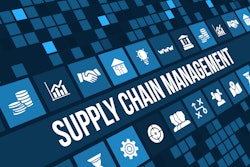
At this point in 2025, there is little new to say about tariffs. A surge of new tariffs and trade restrictions in the first months of 2025 included 25% import duties on Canada and Mexico and 145% and higher tariffs on Chinese goods. The result has been a constant threat of increased costs for raw materials and components impacting everything from electronics and automotive parts to food and fuel. For those companies who didn’t learn their lesson from the COVID-19 period or earlier rounds of tariff threats, navigating heightened supply chain volatility is a recurring nightmare that never seems to end.
Even for those organizations with planning and experience, mounting pressure to deliver measurable financial returns from investments, including software and technology, weighed heavy given increasingly complex global supply chains. This is especially true when evaluating corporate mandates to invest in AI. The question everyone is asking is: where do I find the most value for my AI investment dollar?
The 2025 Stanford AI Index Report shows that companies seeking strong ROI should focus their AI investments on supply chain optimization, specifically, on pricing and analytics.
What guidance does the Stanford AI Index give us in 2025?
The Stanford AI Index provides one of the most comprehensive set of data needed to direct AI investment dollars to date. In short, it finds that AI deployments in supply chain and inventory management are among the most likely to deliver positive financial returns. Specifically, 70% using AI in strategy and corporate finance report revenue increases. In addition, service operations and marketing/sales also show strong potential for value creation. These are impressive figures that greatly outpace the ROI reported in many other business functions, underscoring supply chain optimization as a high-potential area for AI investment.
The report also points out that while AI adoption has surged – 78% of organizations now use AI in at least one business area – the most significant financial benefits are concentrated in supply chain, service operations, and corporate finance. This suggests that companies looking for rapid, measurable ROI should prioritize AI projects in these domains, rather than spreading resources thinly across less proven areas.
Pricing: The hidden lever for supply chain profitability
Pricing stands out as a winner within the supply chain optimization category because it is a demonstrated critical driver of financial performance. AI-powered pricing and analytics tools are enabling supply chain teams to outpace the market and competition. Key areas of investigation should include AI pricing tools that can:
- Uncover hidden margin opportunities: By analyzing large volumes of transactional and market data, AI can identify pricing outliers and margin leakage that might otherwise go unnoticed. These “actionable insights” connected to agentic AI are the basis for improvement that would have otherwise gone unnoticed and unrealized.
- Adapt to volatile market conditions: With AI, companies can dynamically adjust prices and respond to shifts in supply, demand, and competitive pressures faster than ever before. It’s not just about tariffs, the speed of markets has drastically increased since the pre-Covid period, where price changes occurred one or two times per year increasing to monthly or more frequently. Customer, competitor, and markets demands are running as speeds many sales and finance organizations can’t handle without the support of AI-powered applications.
- Optimize price negotiations: AI-driven analytics provide sellers with real-time insights into market trends and customer performance, empowering more effective negotiations and effective cost management to avoid margin compression.
The benefits of AI in this category are not theoretical, they are well documented. The Stanford AI Index highlights that supply chain management is one of the few business functions where the majority of organizations report both efficiency in the form of cost savings and margin expansion in the form of targeted profitability, revenue, and volume gains from AI adoption.
Accelerating impact: AI-powered insights vs. conventional wisdom
One of the more interesting findings from the study is the focus on low skilled or inexperienced workers. This is important because once CEOs, CFOs, and CROs have looked to cost savings and then revenue and margin expansion for ROI, the last remaining lever to pull is asset utilization.
AI-enabled tools are, by definition, focused on democratization of expertise, and this is not different in the AI-enabled supply chain. It can take months if not years to onboard, train, and make highly effective a new member of a pricing, finance, or sales team.
Traditionally, effective pricing and negotiation required years of experience and deep institutional knowledge. Today, AI-powered analytics platforms give supply chain professionals valuable contextual decision support and deep workflow assistance, without they years or decades frequently associated with having “tribal knowledge” or the experience to effectively make data-driven decisions quickly and confidently. An accelerated path to impact is one of the most compelling use cases for AI-enabled pricing and supply chain applications, allowing organizations to respond to opportunities and risks in real time with a much faster ramp up time.
Best practices for maximizing ROI from AI in supply chain pricing
Scalable, data-driven pricing is foundational to supply chain profitability. By leveraging AI and advanced analytics, organizations can automate the detection of margin leakage, streamline supplier cost management, and deploy new pricing strategies with unprecedented agility. This approach not only drives financial performance but also enhances resilience in the face of market volatility.
While every organization’s journey is unique, the common thread is clear: those that prioritize AI investments in pricing and supply chain optimization are best positioned to capture cost savings, drive revenue growth, and outpace their competitors.
The path to AI-powered supply chain optimization should be seen as more of a journey. No company starts with perfect AI-ready data and perfect use cases. The best companies continuously refine data, workflows, and use cases. To fully realize the benefits highlighted in the Stanford AI Index, organizations should:
- Focus on measurable use cases: Target pricing and supply chain functions where AI can directly impact key metrics like margin, cost-to-serve, and inventory turns.
- Adopt integrated analytics platforms: Unified AI solutions enable seamless data flow and holistic optimization across procurement, pricing, and sales.
- Invest in team enablement: Equip supply chain professionals with training and tools to interpret AI-driven insights and act decisively.
- Establish robust measurement frameworks: Continuously track and validate the financial impact of AI initiatives to ensure sustained ROI.
For companies seeking ROI, AI investments in supply chain optimization, especially in pricing, offer some of the most immediate and significant financial returns. By embracing AI-powered pricing and analytics, organizations can uncover hidden margin opportunities, optimize supplier relationships, and empower their teams to deliver impact faster than ever before. In a rapidly evolving market, those who prioritize these investments will lead the way in both profitability and resilience.




















